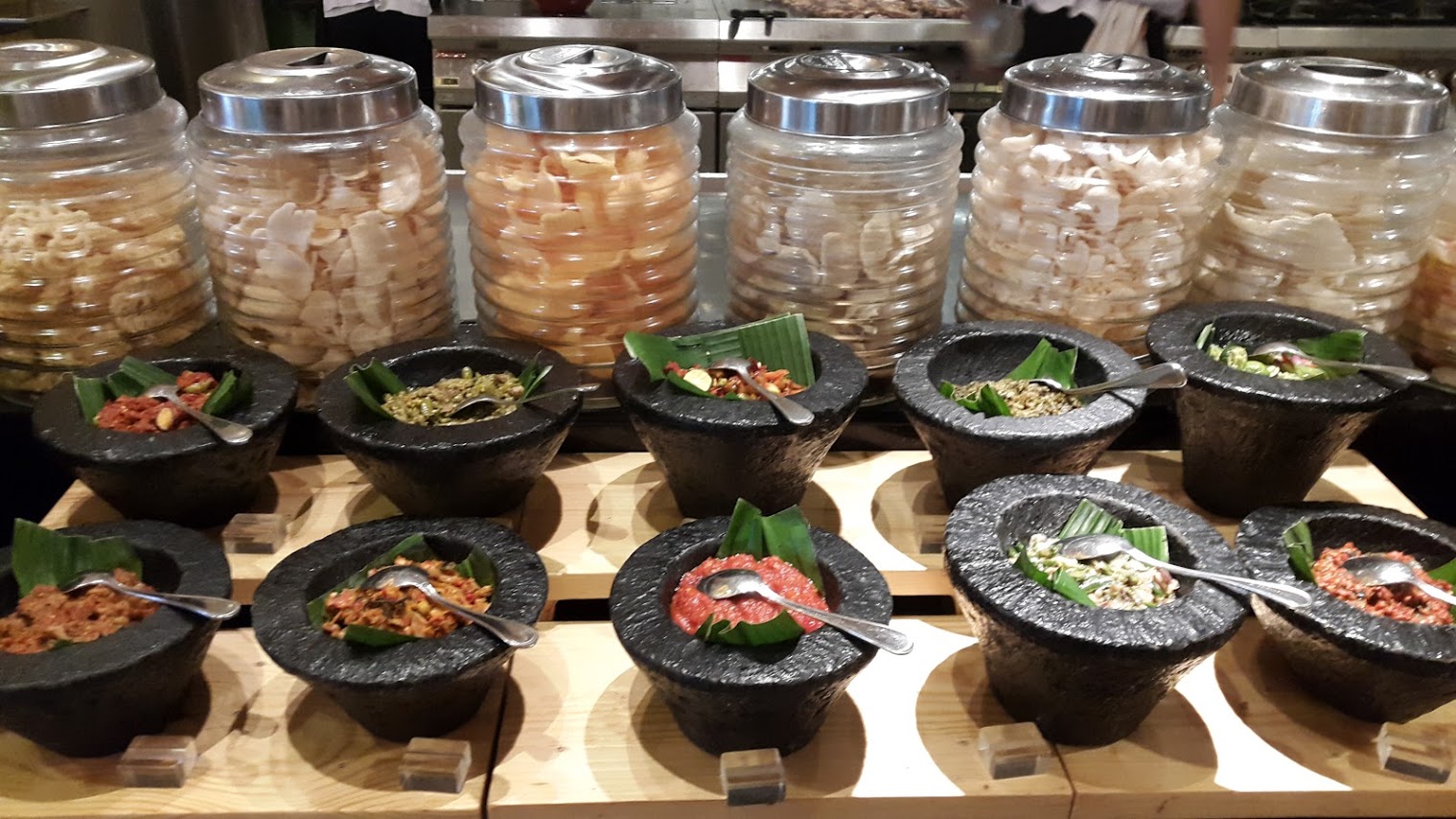For Indonesian, spicy foods have special spot in their hearts. Almost every provinces in Indonesia has hot, spicy dishes—and guess what, they are Indonesian’s all-time favorite. Padang, Manadonese, Bali cuisines are just a few of Indonesian’s signature spicy foods. Almost all Indonesian restaurants, even though they don’t specialize in spicy food, offer sambal or chili sauce to top off the dining.
There are also many restaurants in Indonesia that specializes in hot and spicy foods. We are not talking about Padang food (which is originally spicy), but those restaurants that offer foods with various level of spiciness. Even there is restaurant that specializes in instant noodles, but with additional chili (up to 25 pieces of chili for one portion!).
That is why it’s not uncommon if when Indonesian going abroad, they will at least bring one bottled Sambal or chili sauce, as they ‘cannot eat without sambal’.
Almost every area in Indonesia has specialty Sambal. Each area uses various ingredients to make hot, delicious, and visually appealing Sambal. If you are a fan of spicy food, you need to know these variations of Indonesian Sambal:
1. Sambal Belacan or Sambal Terasi
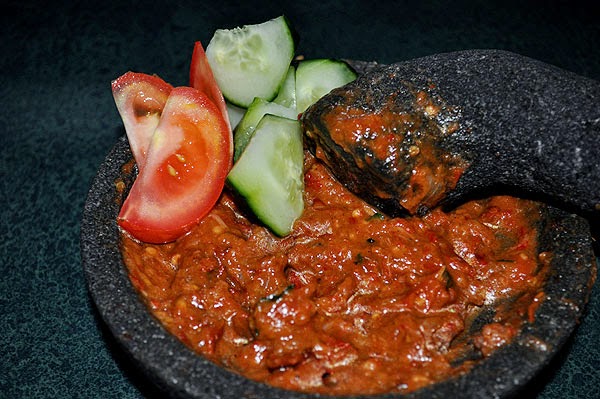
Sambal belacan or sambal terasi is one of the most popular Indonesian sambal that you can find in almost everywhere. The raw Sambal is made from fresh chilies, tomato, terasi (shrimp paste), and shallots. Sambal Belacan is perfect to be eaten with deep-fried fish, chicken, or duck and lalapan (assorted raw vegetables). Well, actually Sambal Belacan goes right with every fried food!
Sambal Terasi Recipe here >>
2. Sambal Kacang
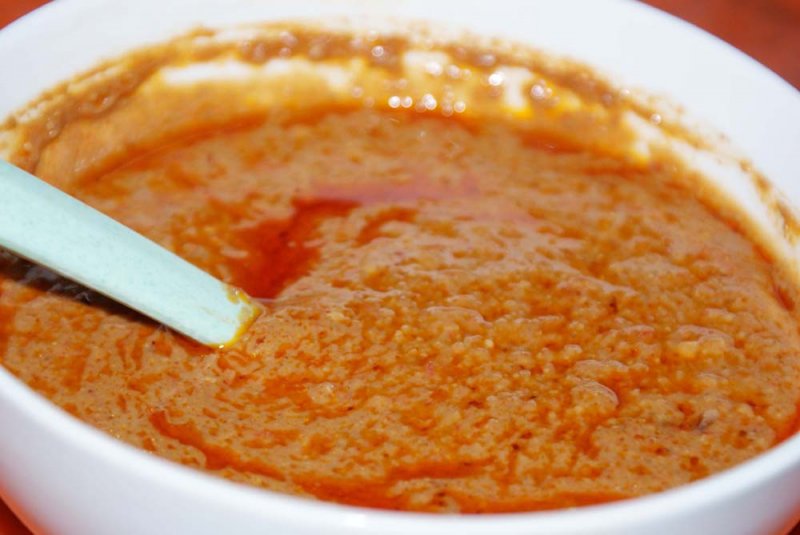
Sambal Kacang or peanut sauce is also one of the most favorite Indonesian sambal. It is usually used in nasi uduk, satay, siomay (dumplings), and gado-gado. It is made from ground peanuts, garlic, chilies, and candlenut that are mixed with water.
3. Sambal Bawang
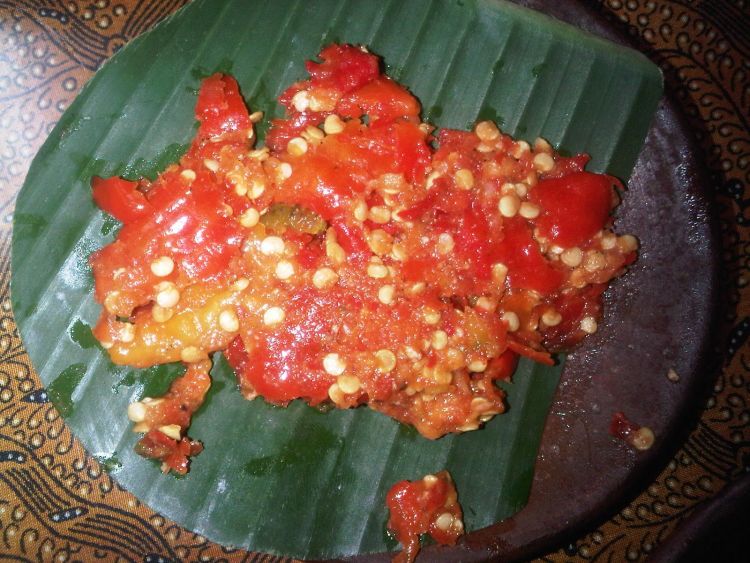
Sambal Bawang has distinctive garlic aroma that is guaranteed to make your taste buds dancing. Sambal Bawang is made from fresh chilies, garlic, and salt that are crushed together using mortar. Before serving, hot vegetable oil is mixed to the Sambal. Dip your fried chicken, tofu, or tempeh in this sambal, and taste the hot sensation!
4. Sambal Kecap
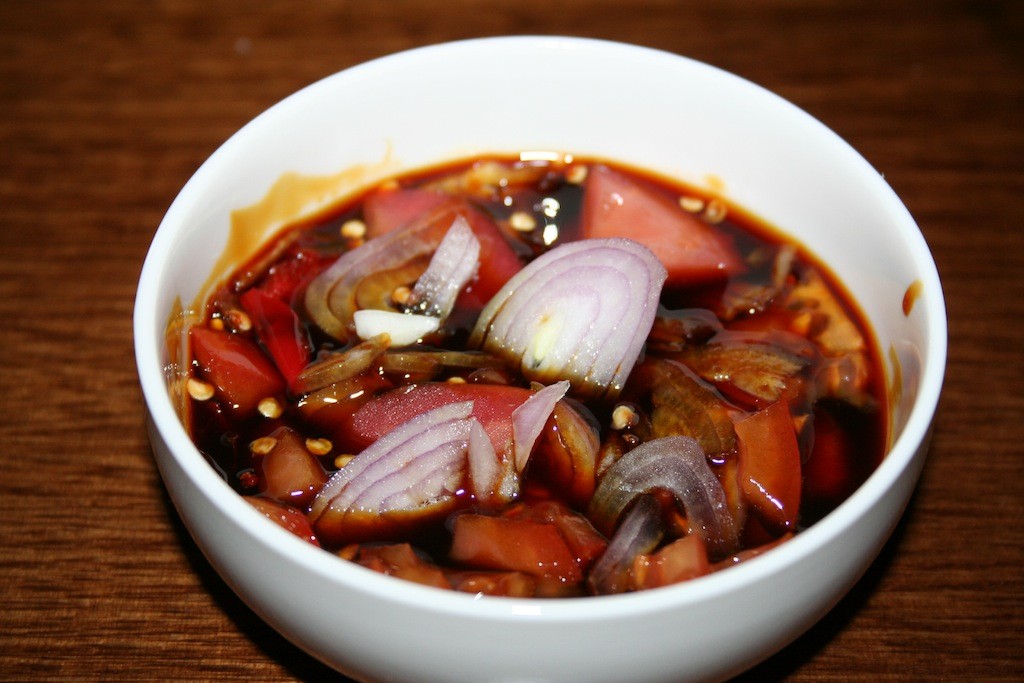
Sambal Kecap is usually used for lamb satay, or other grilled foods such as grilled fish and chicken. This kind of Sambal is not ground or crushed. It is made from the mixture of chopped chilies (sometimes with tomatoes and chopped shallots too), sweet soy sauce, and lime juice.
5. Sambal Lado
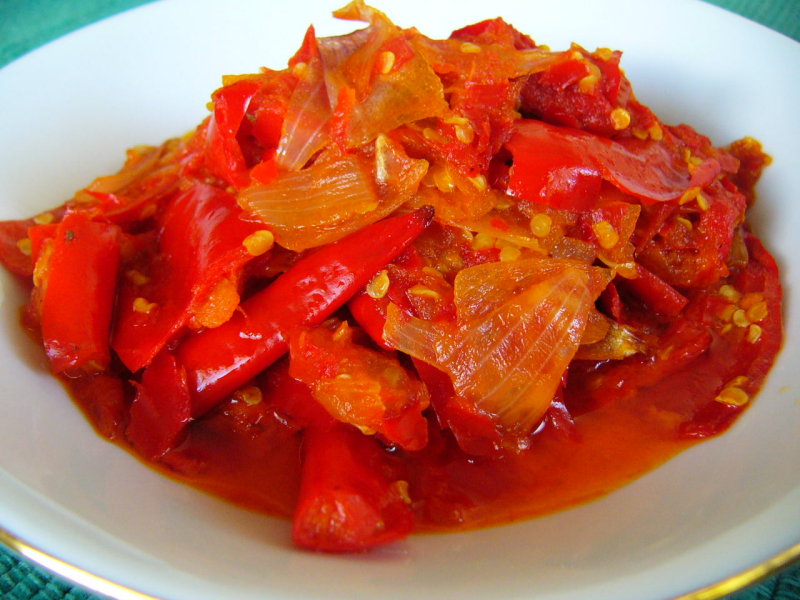
Sambal Lado is originated from Padang, West Sumatera. It is extra hot, and the flaming red color is just so appetizing! Sambal Lado is made from crushed chilies, garlic, shallots, onion, tomato, salt, and lime juice; all sautéed in hot cooking oil.
6. Sambal Hijau
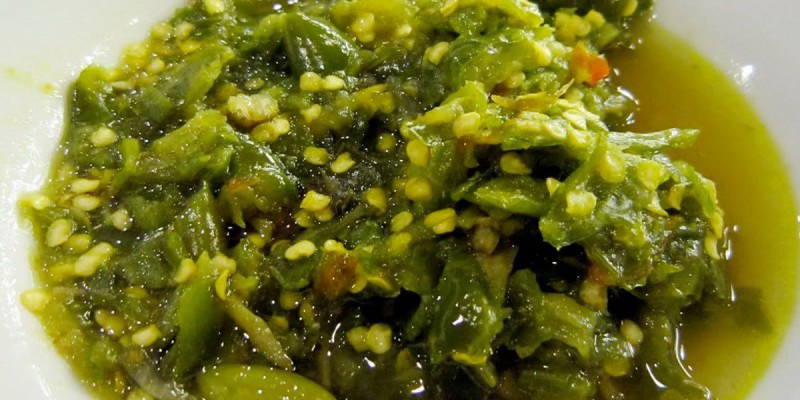
The green color of this Sambal does not mean that it’s not as tasty as other Sambal with red color. Sambal Hijau has its own distinctive aroma and flavor because it is made from green chilies. Green chilies, garlic, and shallots are fried and added with salt and sugar before crushed using mortar. Usually, Sambal Hijau is always available in Padang Restaurants, but there are also bottled Sambal Hijau available in major supermarkets across Indonesia.
7. Sambal Bajak
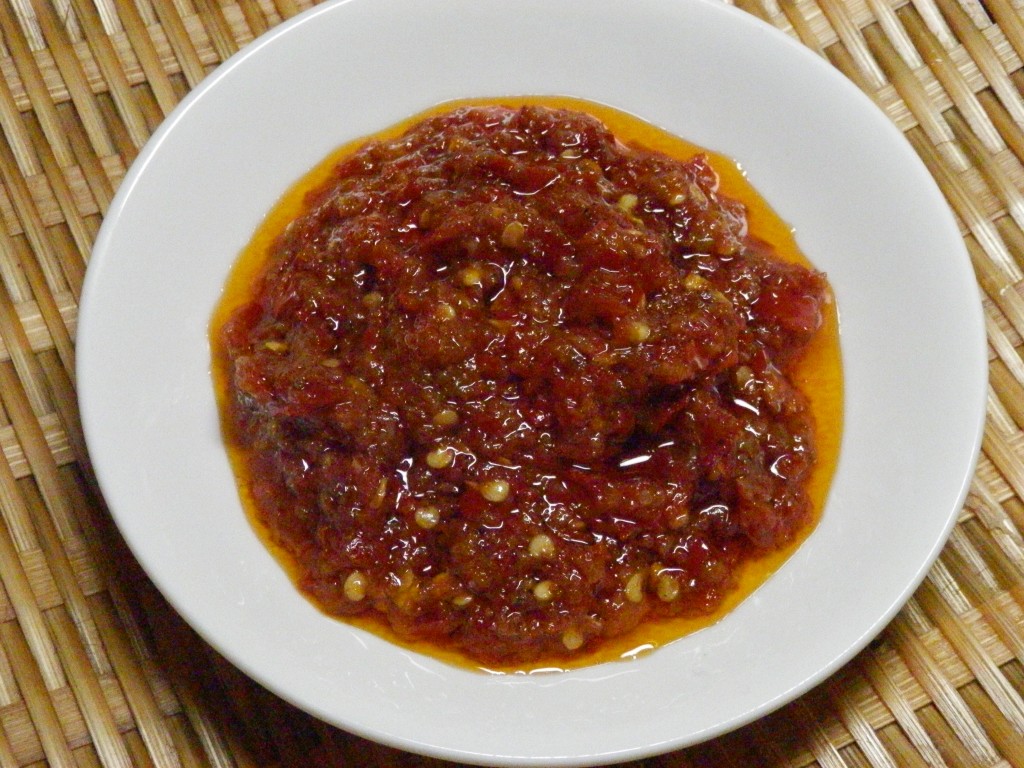
If you have low tolerance to spicy food but want to try Sambal, you can choose Sambal Bajak as a starter. It tastes sweet and not too spicy despite of its dark red color. Sambal Bajak has similar ingredients to Sambal Belacan, but with addition of tamarind extract. Sambal Bajak usually becomes dipping sauce for Indonesian fries or even fried chicken.
8. Sambal Rica
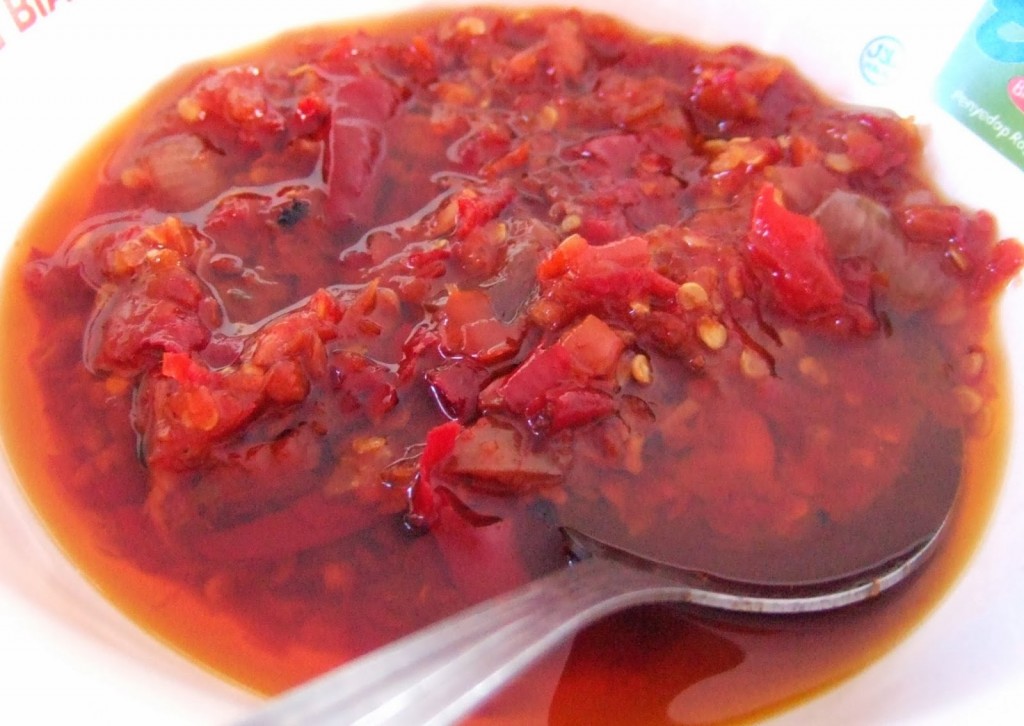
Sambal Rica is a signature Sambal from Manado, North Sulawesi. The lemongrass used in this Sambal makes it different from other Sambal in Indonesia. Sambal Rica is made from ground chilies, shallots, ginger, and sugar that are sautéed in vegetable oil. Chopped lemongrass and lime juice are added to enhance the aroma and its freshness.
9. Sambal Pencit or Sambal Mangga
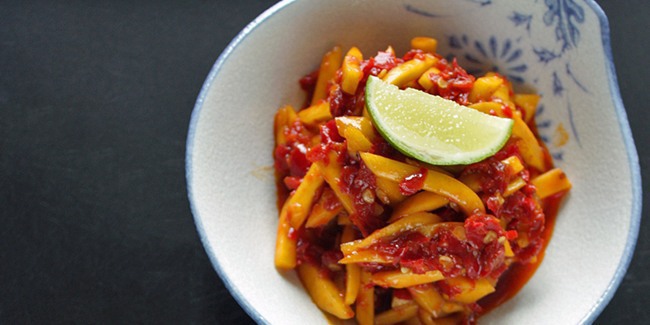
Sambal + raw sour fruit = undeniable taste. Sambal Pencit, or Sambal Mangga is a type of Sambal Belacan that is mixed with shredded raw mangoes. Try this Sambal with seafood (grilled seafood is better) and hot steamy rice. Yumm!
10. Sambal Dabu-dabu
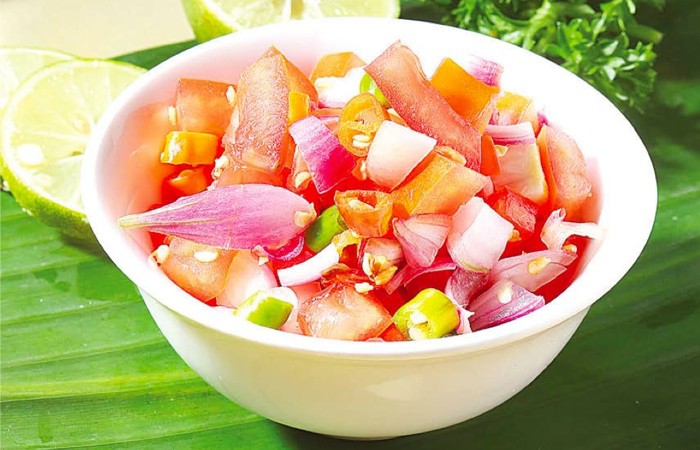
Manado is famous with its spicy cuisines. When you try Manadonese cuisines, make sure you don’t forget to try this Sambal. Sambal Dabu-dabu is a type of raw Sambal. It is made from chopped fresh chilies, tomatoes, shallots, and lime juice. Just mix the ingredients in a bowl, add it with sugar and salt, and pour it with hot vegetable oil before serving. It looks like Mexican salsa, isn’t it?
Sambal Dabu-dabu recipe here >>
11. Sambal Pecel
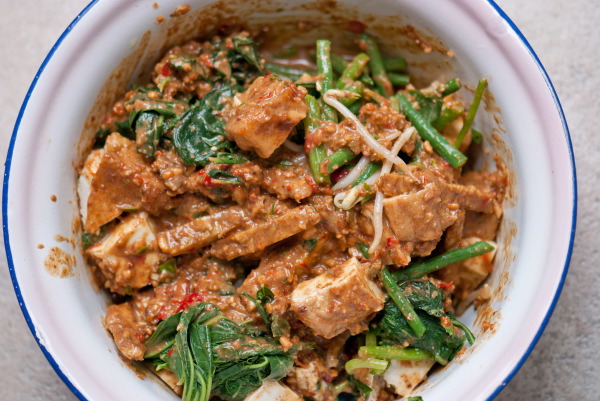
When you see it, Sambel Pecel may look exactly like Sambal Kacang. The look may be similar, but the taste is different. Sambal Pecel is made from garlic, shrimp paste, peanuts, chilies, kencur (galingale), tamarind extract and palm sugar that are crushed with stone mortar. Before serving, lukewarm water needs to be added to the Sambal. This Sambal isn’t too spicy and has distinctive sweet and savory flavor, thanks to peanut and galingale. It is usually consumed with boiled vegetables such as bean sprouts, spinach, and cabbage.
12. Sambal Matah
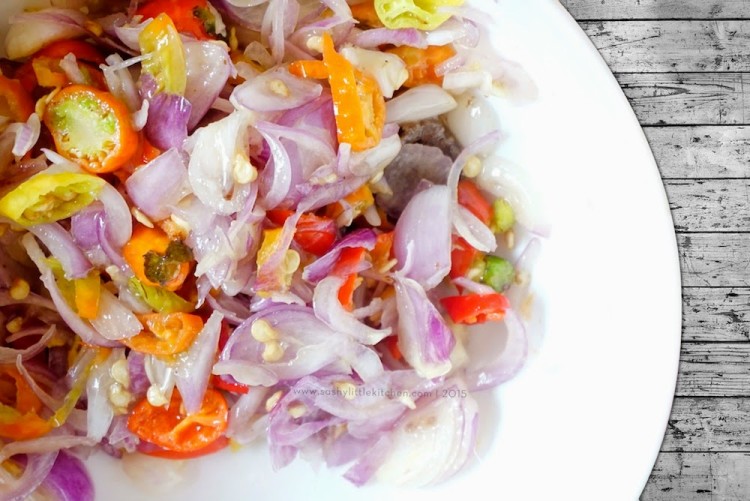
This popular Sambal is originated from Bali. Just like Sambal Dabu-dabu, Sambal Matah is made from raw ingredients such as shallots, chilies, tomatoes, lemongrass, and one special ingredient: kecombrang (also known as torch ginger, red ginger lily, or Etlingera). The colorful look of this Sambal, along with its fresh taste will entice your appetite for sure.
13. Sambal Ayam Geprek
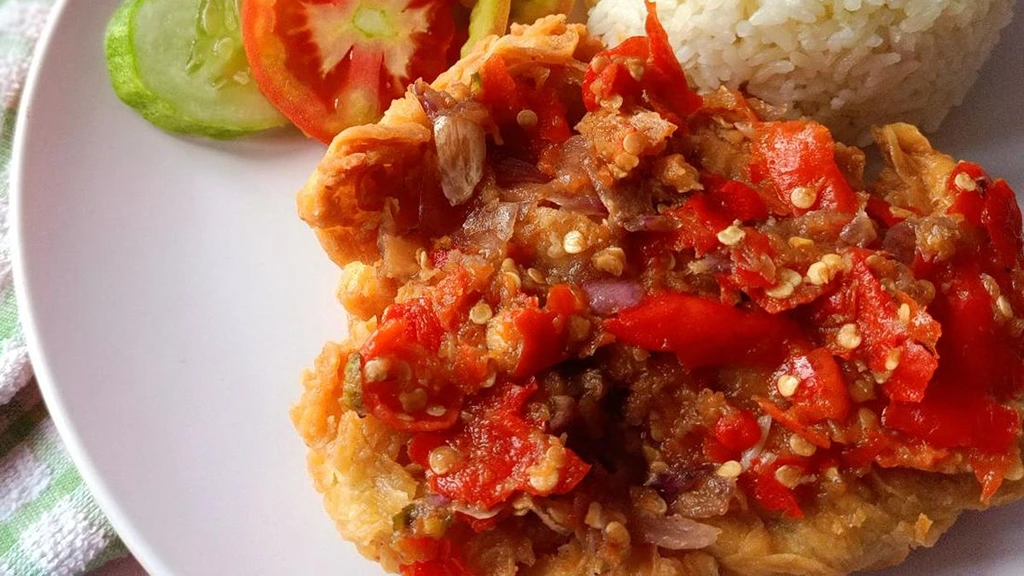
When translated to English, Sambal Ayam Geprek is often called “Spicy Smashed Fried Chicken.” “Sambal” refers to a spicy chili paste, and “Ayam” means chicken, while “Geprek” indicates the process of pounding or smashing the chicken before frying. So, Sambal Ayam Geprek typically consists of crispy fried chicken that is then smashed or pounded and served with a spicy sambal sauce.
Sambal Ayam Geprek recipe here >>
14. Sambal Pete
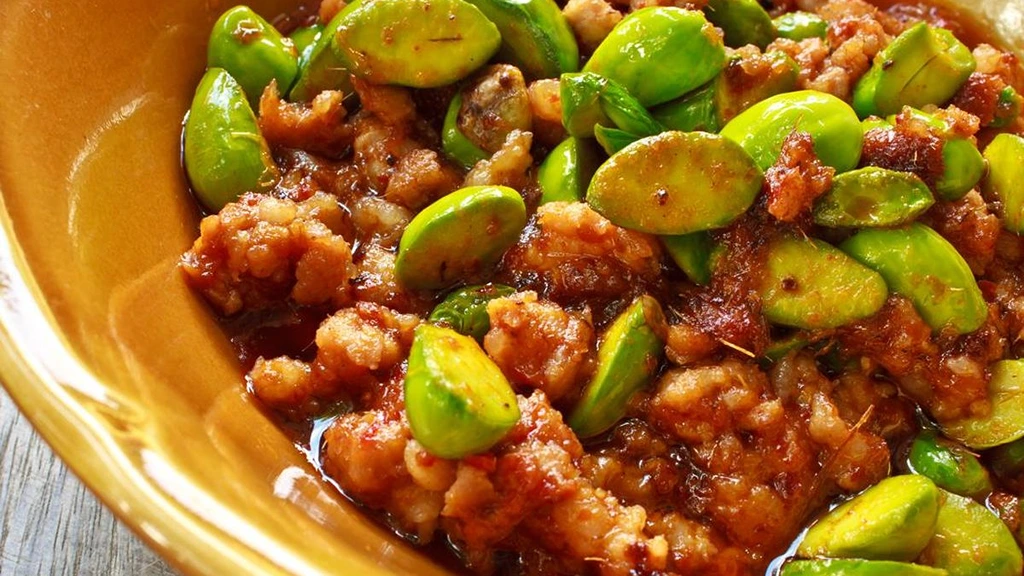
Among the countless beloved dishes and condiments in the Indonesian culinary arsenal, there is one that stands out for its distinctive aroma and taste: Sambal Pete. Sambal Pete is a fiery and savory chili sauce made from a special ingredient – “pete,” or stinky beans. These legumes are so named because of their intense aroma. Sambal Pete can be used in various dishes, from stir-fries to grilled meats and even as a condiment for rice.
Sambal Pete recipe here >>
15. Sambal Penyetan
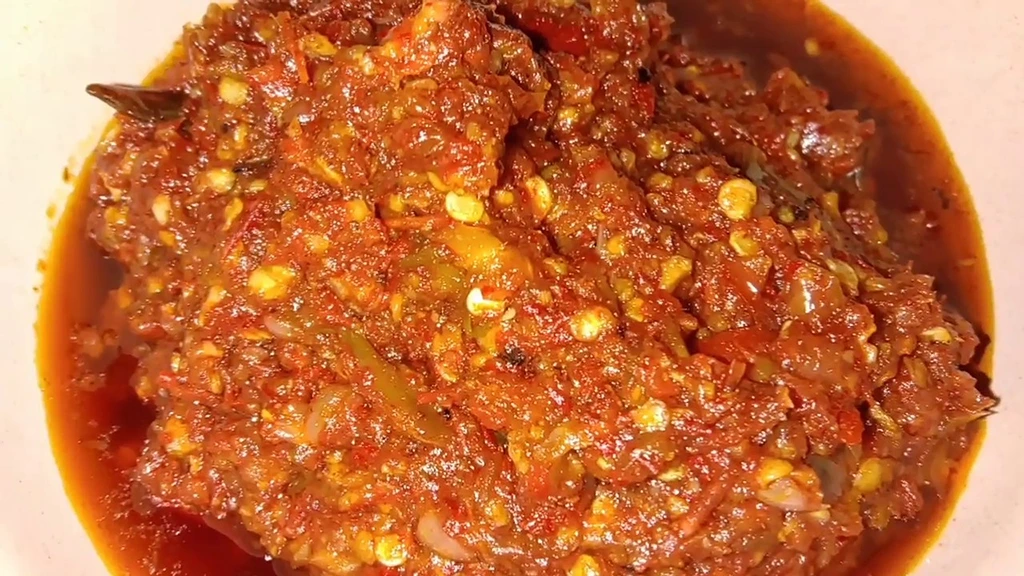
In the vibrant world of Indonesian cuisine, there’s one condiment that has earned a special place in the hearts of many – Sambal Penyetan. One of the reasons Sambal Penyetan is so beloved is its versatility. It pairs wonderfully with a wide range of dishes, from fried chicken (Ayam Penyet) to grilled meats and even vegetables. The spiciness of the chilies is complemented by the sweetness of sugar, the tang of lime, and the savory depth of shrimp paste (terasi).
Sambal Penyetan recipe here >>
16. Sambal Pedas Daun Jeruk
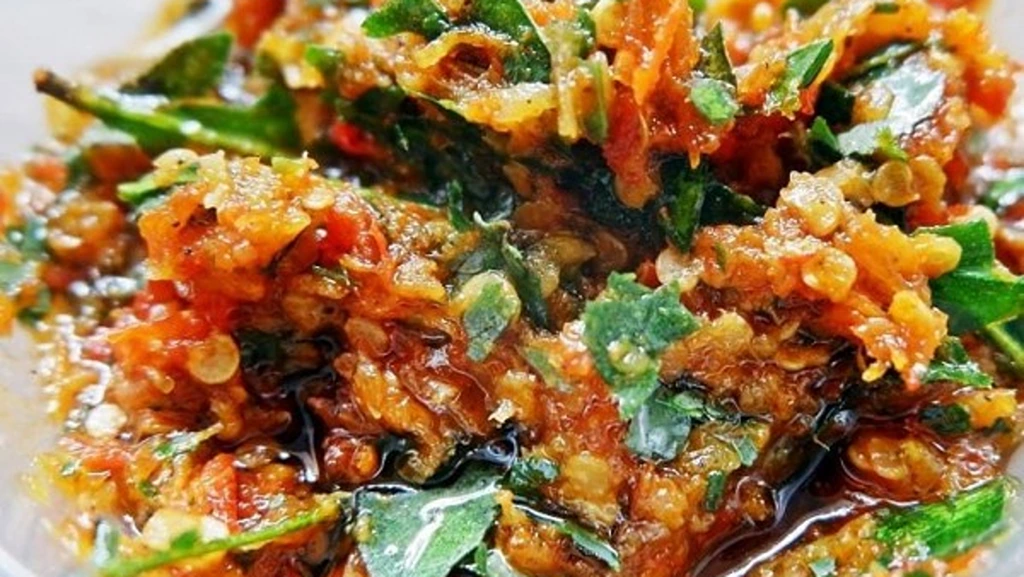
Indonesia’s culinary treasures are as diverse as the archipelago itself, and among the many spicy wonders it offers, Sambal Pedas Daun Jeruk stands out as a zesty delight. This chili condiment, elevated by the vibrant flavors of kaffir lime leaves, adds a burst of unique and fiery elegance to Indonesian dishes.
Sambal Pedas Daun Jeruk recipe here >>
17. Sambal Korek
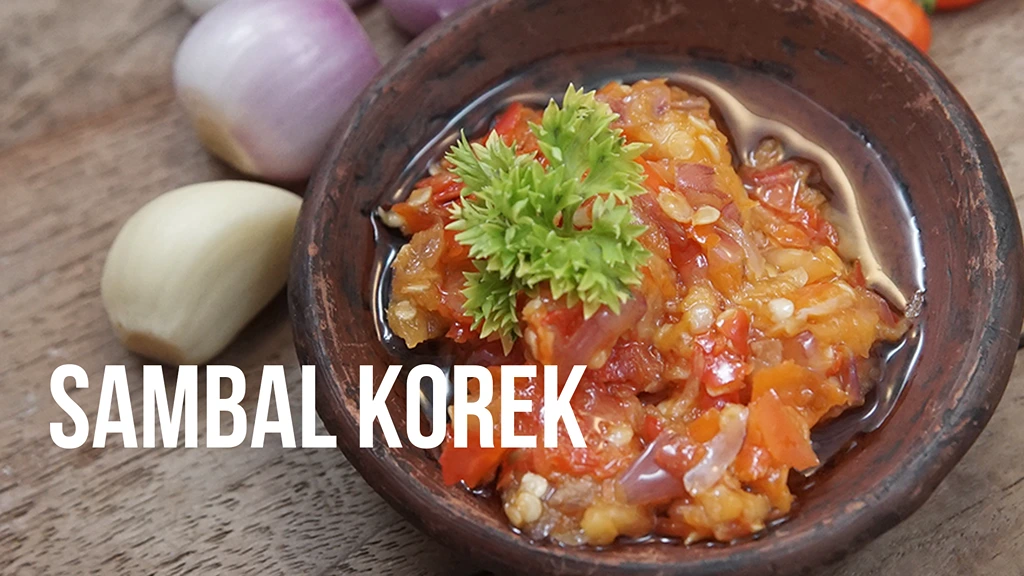
Indonesia’s culinary landscape is a treasure trove of bold and vibrant flavors, and Sambal Korek is no exception. What sets Sambal Korek apart is its harmonious blend of flavors. The spiciness of the chilies is balanced by the sweetness of sugar, the tang of lime, and the savory depth of shrimp paste (terasi).
Sambal Korek recipe here >>
18. Sambal Cabai Hijau
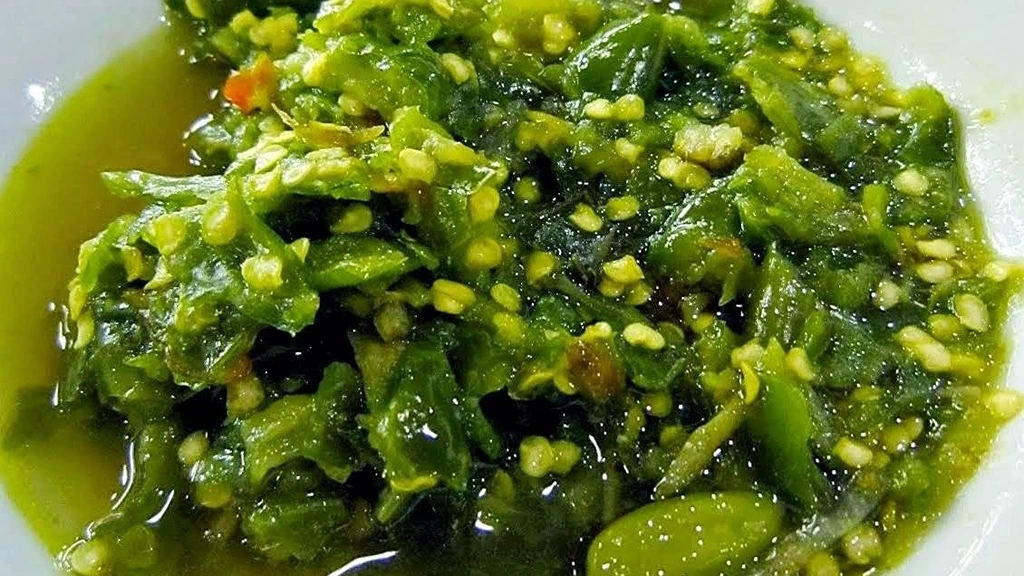
Its fresh and fiery nature, combined with its harmonious balance of flavors, has made it a beloved condiment in Indonesian cuisine. As the name suggests, Sambal Cabai Hijau is all about fresh green chilies. Its signature flavor is a delightful combination of spiciness and a bright, fresh zest that tingles the palate.
Sambal Cabai Hijau recipe here >>
Although the main ingredient of Sambal is chilies, but the variations of additional ingredients makes Sambal become one of the rich culinary heritages in Indonesia. It does not only add the flavor of the meals, but also reflects the diverse culture of Indonesia itself.
So, what is your favorite Sambal?

